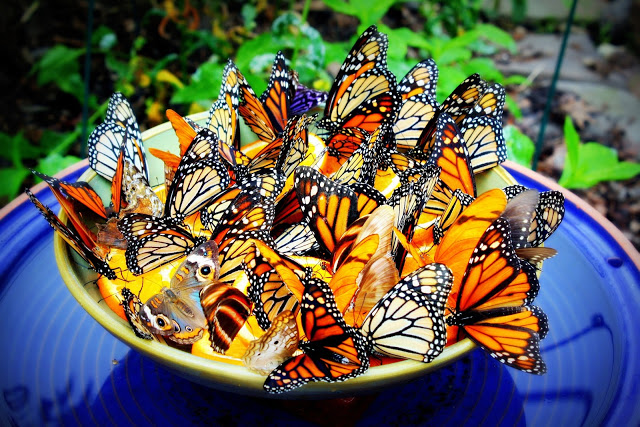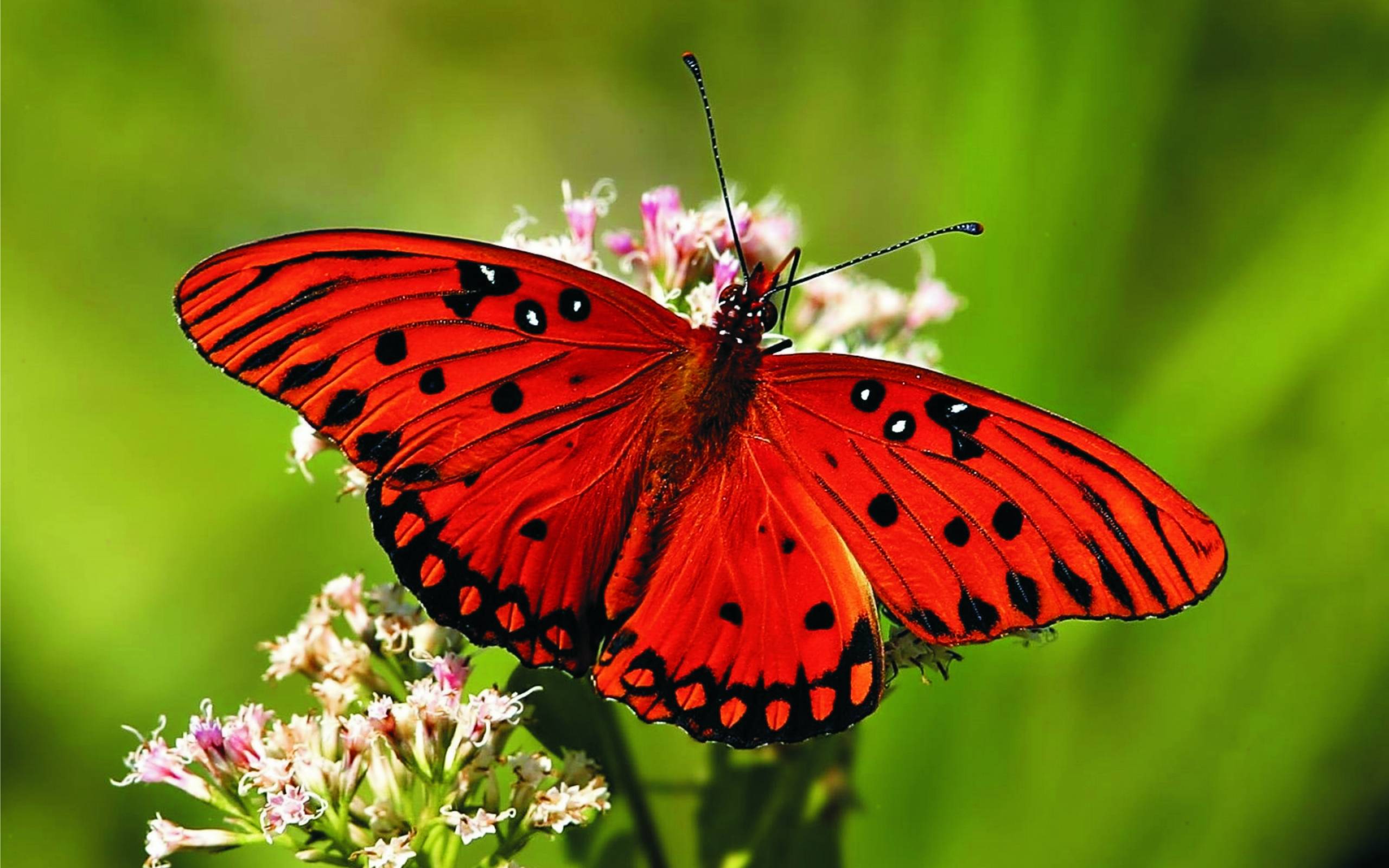
Originally published 5/27/2015.
As I write this article I am in the middle of an exciting and quite lengthy period of travel. Jokingly, I have referred to this as my International Consulting and Seminar Tour. It is a 31-day trip that takes me to Mexico, France, the United Kingdom, Spain, and the Czech Republic—and includes 11 separate stops along the way. This trip is a nice mixture of seminars and consulting opportunities. Those who follow me on Twitter (@KenKPCT) have been able to keep up with these adventures.
Over the years, I have had the good fortune to work with some amazing animals, incredibly talented people, and a variety of unique and inspiring situations. So, when I say I just had an experience that was wonderfully special, that is saying quite a lot.
Can you show us how to train butterflies?
I was asked to participate in a special project that I will refer to as the London Butterfly Project. A botanical specialty group in the UK has built a large garden designed to show the symbiotic relationship between plants and animals. Each year this group sets up different gardens with different themes in different parts of the United Kingdom. Their focus for 2015 is to demonstrate the role that butterflies have in certain ecosystems. This project includes more than 10,000 butterflies of many different species that live in the garden, which is hidden among the tall buildings of London. The garden occupies a space that is larger than a football field.
The director of the project, Lucinda Bartholomew, had envisioned a fundraising gala presentation that would include an orchestra in the middle of the garden playing beautiful classical music while butterflies flew from one part of the garden to the other. She had heard of me through a mutual friend, and contacted me to ask whether I thought thousands of butterflies could be trained to fly on cue, and in unison, from one location to another. I explained that I had never worked with butterflies and knew very little about their sensory mechanisms, but I imagined that if someone understood those things it should certainly be possible. Lucinda then followed up with the question: “Would you be interested in helping design and implement a training plan for our butterflies?” I immediately said yes! Train thousands of butterflies to fly from point A to point B on cue? What a unique training opportunity!
Now, how do I do it?
I began reading up on butterflies and sent a dozen questions to the group’s butterfly specialists. Which of the butterfly senses are better: vision, hearing, smell, or something else? What do you feed them? How do you feed them? How often do they eat? Can you send me pictures of the garden? Can you show me where you want them to start and to where you want them to fly? The answers were varied, depending on the butterfly species. I found that some of the questions about the capabilities of butterflies were still being studied by scientists, and are not fully understood for every species.
I also learned that some of the butterfly species are quite territorial and will compete and fight with other species for access to “their space.” This characteristic worked to our advantage, as the butterflies had already self-selected their preferred spaces and were living in three different parts of the garden. Based on that information, and combined with some other research, I proposed that we try to use a vibrating sub-sonic tone for one group of butterflies, a high-pitched whistling tone for another group, and a flashing light for the last group. Once I understood the goal of Lucinda’s vision, I felt that we could make a bigger impression if we could train different groups to fly at different times. Project leaders loved the idea, and we moved forward with that plan—hoping that at least one of the cues would work with one of the groups.

Day 1 – Training begins!
We began by using large bowls of fruit, nectar, or a special liquid solution, depending on the species, and paired the selected cue (vibrating cathode, high-pitched tone, or flashing light) with the immediate presentation of multiple bowls of the preferred food.
We started with 25 of us (staff, volunteers, and me) spread out among the butterflies, with covered bowls placed next to the sources of the cue. The moment the cue was turned on, we removed the covers to the bowls, which were spread out over the areas where the butterflies were currently perched. (Do butterflies perch? Not so sure!)
We then moved to the next group of butterflies, pairing their unique cue with that group’s food. We repeated the process with the third group. After about 25 minutes of feeding, we turned off the repeating cues, removed the bowls, and left for two hours. We followed this routine four times, and by the end of the first day the butterflies were beginning to fly to their food immediately upon presentation of the cue.
Day 2 – It’s working!
On day two we moved the bowls several meters away from where they had been placed on day one. A majority of the butterflies made the short flight immediately! This was going to work! The team was amazed! For a while, I pretended that I was not surprised. After all, I always teach that training is the same, and works equally well, for all species, “whether training an earthworm or a Harvard graduate!” But I finally had to admit that even I was surprised at how well and how quickly this training worked. We were training butterflies successfully! 10,000 OF THEM, AT ONCE! (Well, maybe about 9,500 butterflies—there were still a few hold-outs!)
Butterfly bullies?
By the end of the second week we had approximated the majority of the butterflies nearly 75 meters. We could have moved the first few groups the full 100 meters in this time-frame, but we made smaller approximations because there were a handful of animals that did not learn as quickly. We took time to make the connection to the cue stronger for the stragglers, usually the less assertive of the butterflies. We accomplished this by spreading the landing sites over a slightly larger area so that the less assertive butterflies did not have to compete for food bowl space with the “bullies.” (Who knew there were butterfly bullies?). After two weeks, we had reached a success rate with approximately 95% of the butterflies!

Putting it all to music
On my last day, the team surprised me. They had me sit in the middle of the garden and just watch. A speaker system played a beautifully orchestrated classical symphony piece. About 45 seconds into the piece, the music began to swell, and right on cue all of the red and orange butterflies took off from the bushes and trees to my left. I watched in awe as approximately 2,000 red and orange colors fluttered across the space in front of me. The butterflies did not move fast but they moved in unison, and the group was spread out over several meters. They undulated in a beautiful tight formation and landed on the far right side of the garden.
Then there was another swell of music and about 2,500 purple and blue butterflies fluttered in a similar manner from the far left to another location on the far right. Then, just as the second group settled into their place, close to 5,000 butterflies of multiple colors took off from a location across from me and fluttered straight toward me and over my head, settling into their trees and bushes far behind me. There were tears in my eyes, and I was speechless! I had been so much in the middle of the process I had yet to truly appreciate how beautiful this behavior was. With the addition of the music, the butterflies appeared to undulate to the rhythm of the music—it was incredible!
New friends and new experiences
I will be returning to the garden for a few days in June to help with a few final tweaks, but I already feel that the project is a success. The team is so excited about the project, and I have made some incredible new friends. The gala performance will probably be a one-time event; we are all hoping that I can find a way to attend. But even if I do not attend, our whole training process and the final performance is being filmed by a British film crew for a documentary!
I can now add Butterfly Trainer to my resume. That’s new, even for me!
Happy Training,
Ken



Post new comment